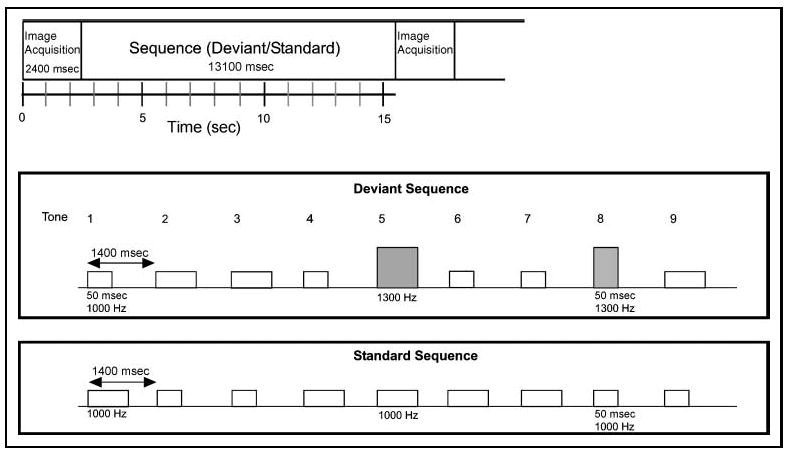Figure 5.

Experimental parameters in the duration discrimination task in a clustered image acquisition paradigm. An image was acquired after every sequence (top). The stimulus sequence started approximately 500 msec after the end of each image acquisition and ended approximately 1400 msec before the start of the next image acquisition. A sequence was either a standard or a deviant sequence (middle and bottom). Within each sequence, short (50 msec) and long (~60 msec in the difficult task and 100 msec in the easy task) sinusoidal tones were presented every 1400 msec in sequences of nine. In standard sequences, all tones were of the same frequency (1000 Hz; white bars). In deviant sequences, two of the tones consisted of task-irrelevant frequency deviants (1300 Hz; gray bars), whereas seven tones were of standard frequency (1000 Hz). Subjects were instructed to judge every tone for its duration only (short or long).
